Posted on Dec 26, 2016 in Director's Notes
1 Comment

Six year old Arundhati goes on a day long school trip to Agra. The itinerary covers Taj Mahal, one of the new Seven Wonders of the World and the old capital city of the Mughals, the Red Fort. The school group returns satisfied, the parents are happy, the children excited and the photos of the group are already on the Facebook! Efficiently and nicely done trip.
Let us look at this event from the perspective of opportunity cost. A student on an average undertakes between 4-6 school trips in his/her entire school life. Thus, each occasion of student education travel is an invaluable opportunity to enable young minds interact and learn from places, people, cultures, and ideas in a way that it complements and builds on in-class learning.
Surely, Arundhati is not revisiting Agra as a student. She has officially seen the Taj Mahal, the only modern wonder that India holds, but, does she truly understand why this magnificent structure deserves this distinction? Does she have any clue as to how this grand architectural marvel found shape through trans-continental collaboration of the finest architects and crafts persons, or how its materials were ferried from different corners of the globe, or the fact that even today the colossal structure stands firm on the most infirm of grounds, a sandy river bed? Unfortunately, Arundhati cannot process any of these facts at the age of six; the journey was chosen by the school because it was a day long journey that six year olds could physically and emotionally undertake. Agra just happened to fall in the desired physical proximity of the school. But did we not innocently rob Arundhati a chance that may have allowed her to truly appreciating her heritage?
The above example is not to whine or to say that we can partner with schools and assist them in planning student education travel programs that are age-appropriate and complement school curriculum. Here, the idea is to pose a set of basic fundamental questions that require our immediate collective attention and intervention. While our education system attracts strict scrutiny from all quarters, then why student education travel has no standards or governing body? Even if we leave education standards aside, why do safety standards elude this domain? Why is no value attributed to the opportunity cost of the outside the classroom learning event?
The answers to these questions are both simple and complex. The resulting debate will eventually yield implementable solutions, but we all need to actively pursue this dialogue. For me personally, the point where children, education and travel meet, is very exciting. These basic questions had not stared at me when I started EdTerra in 2009, with the aim of educating (Ed) students through intense interactions with mother Earth (Terra). Our seven years of existence as EdTerra Edventures has been enriching and has allowed us to develop and implement methodologies and principles that have yielded promising results. It has also educated us to start asking these fundamental questions, because in their answers lay the future of student education travel. The idea of this article is to share our learning and enable more institutions and individuals to help make education travel more meaningful for our children.
Meaningful student travel complements education and completes it. The classroom provides the conceptual framework of broad concepts but travel enables the students to experience the real world application of the same. A good travel “Designer” invests heavily into integrating classroom objectives into the broader spectrum of life, through journey design. At EdTerra, we have a dedicated team of Program Developers who try to convert each tourist location into a learning destination for the students.
It gives a school an edge when a student can feel, touch and experience what the teachers explain within the confines of a classroom. Travel has no boundaries unlike the classroom. History is brought alive at Qutab Minar as the students see the physical reality left behind by the Mamluk Dynasty, and can recreate history through creative theatre. Geometry acquires wider, more practical dimensions as they study the dome and the minaret, Laws of Physics become clearer when they explore why the minaret still stands tall in a high seismic zone, and Geography assumes ground reality as students understand the morphology of the Aravali range and how it creates a basin that both supported and protected the dynasty.
The question is, why are these simple ideas not even attempted by many to bring alive student travel? Surely it is not the lack of creativity or vision; the reality is that a single location like Qutab Minar assumes a herculean quantum of physical work, the moment it is mapped against the curriculum and age groups; a task that will be a challenging undertaking for any education or travel company. And even if any company accomplishes this task, will their efforts find commercial reward? Well, that is doubtful. The mindset of most schools forces them to only consider the price of the journey and not the learning offered or the cost at which it was created. EdTerra continues to invest in the area of program development for we believe that discerning schools will pay the little extra for they understand the value we deliver through our journeys. This belief has allowed us to develop the largest portfolio of educational programs, which includes international Going Global programs, India Discovery programs, outdoor adventure camps and in-school workshops.
At EdTerra, each journey design reflects a highly demonstrable educational value that can be felt, touched and measured, and is achieved through a four-step process. We first define the cognitive and affective learning objectives for each journey and align them with 21st century skills. Next we develop and design a variety of team-based activities and projects, supported by highly engaging educational collaterals in the form of illustrated storybooks, discovery sheets, work books, multi-media workshops, etc. Thirdly, to measure student learning, we use self and peer-based evaluation methodologies. Finally, the students capture the fun and learning of their journey through a highly demonstrable media output that allows them to share their experiences with their peers and family. This last part serves as evidence of learning and is an area of critical interest to us. Here, as a company, we have invested heavily and created two highly effective tools, Young Authors Program and Young Filmmakers Program. The students’ engagement with these programs commences prior to the journey in the form of in-school workshops and continues during their journey where they work in teams to document their experiences in a high-quality photo book, magazine or a video film.
The four steps would appear logical but what some may miss is that each of these steps also needs to be audited from the perspective of emotional and physical safety of the students. Today, the meaning of safety in student education travel is limited to the idea of a first-aid kit and on-call doctor. At EdTerra, student safety is an ingrained element in every process and practice and extends to the entire eco-system covering our network of on-ground partners and associate
All that we have learnt and achieved at EdTerra has not happened overnight. Student education travel is like the calm duck that seems to float effortlessly; no one sees the furious pedalling underneath. Education in any form cannot be treated lightly. We are dealing with live minds and they are dynamic, volatile and eager to absorb, and are highly impressionable. It is commendable how schools continue to make the classroom experience more engaging from the perspective of students’ creativity and intelligence. However, I feel that the value of travel as an educational tool is yet to be fully appreciated and integrated into the curriculum. Travel is not merely an agenda in the school calendar but it is a valuable tool which can be used to make a significant difference in the way education is delivered.
The fast emerging industry of student education travel must become aware of the gravity of the responsibility of making travel a meaningful activity which benefits the students, complements school learning and prepare them for a journey called life.
A good student education company has to have a strong back-end team comprising educationists, strategists, child psychologists, media personnel, who understand curricula and pedagogy and can integrate them seamlessly into their programs. The programs need to address cognitive as well as effective learning needs, inform as well as develop critical thinking, analysis, collaboration, peer learning, sensitisation, and have a long term impact. Certainly not an easy task! EdTerra stands committed to this space and is open to learning and partnering with like-minded individuals and educational institutions interested in redefining student education travel.
Schools can get in touch with us by calling our helpline number: +91-11-48885800 or filling up the program query form here.

Shonu Chandra: A former award winning filmmaker, Shonu discovered the joy of travelling while backpacking through Europe, Africa and South East Asia in what we call in office, his ‘young’er days. But during that very period he also worked extensively with children, involving them in media projects to narrate the stories of their lives. That’s when he realised the potential of travel to populate these young minds with new perspectives and creative ideas. A truly democratic leader otherwise, the only autocratic rule he has for his team is – “Everybody MUST Travel.” He is the Founder Director of EdTerra.
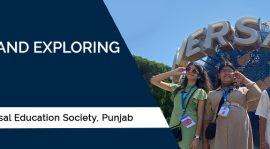
Our school trip to...

Our visit to Shimla...
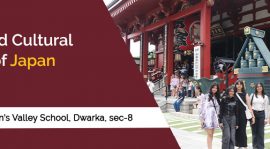
Did you ever feel...
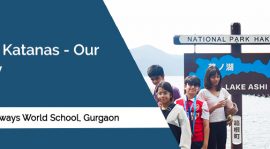
We visited Tokyo and...
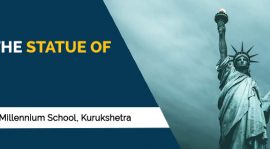
The Statue of Liberty...

Auschwitz Camp in Poland...
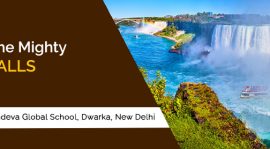
Today, we are going...

We started our USA...
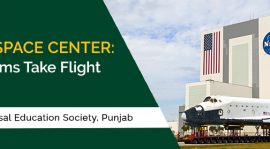
Have you ever wanted...

Singapore may be small...
See What Our Edventurers Experience!